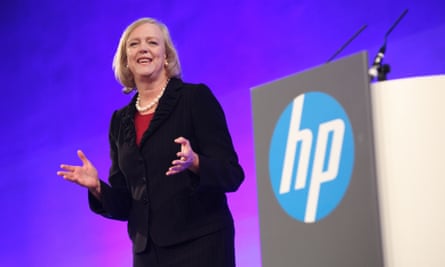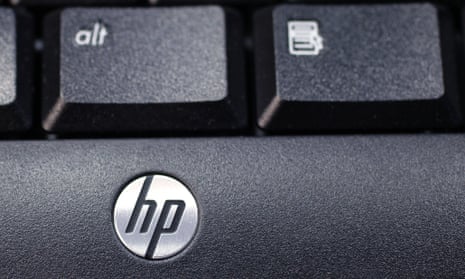Silicon Valley stalwart Hewlett-Packard announced on Monday that it will split itself into two companies.
The 75-year-old Palo Alto-based company, one of the original tech titans, had previously fought off calls for a break-up, but has now decided that it will separate its “enterprise” arm – aimed at business and including servers and data storage equipment, software and services – from its business selling personal computers and printers.
HP came close to a break-up in 2011 after its ill-fated acquisition of UK software company Autonomy. But the chief executive officer at the time, Meg Whitman, rejected the idea. “Together we are stronger,” she said. HP reorganized itself in 2012 to combine the PC business with its more profitable printer operation.
Monday’s announcement follows news that the company would cut 5,000 more, bringing the total number of layoffs in 2014 to 34,000.
On Monday, Whitman argued that much had changed since 2011. “Our work during the past three years has significantly strengthened our core businesses to the point where we can more aggressively go after the opportunities created by a rapidly changing market,” said Whitman, now chairman, president and CEO.
She said the split would “provide each new company with the independence, focus, financial resources and flexibility they need to adapt quickly to market and customer dynamics, while generating long-term value for shareholders.”
The new business-services focused company will be called Hewlett-Packard Enterprise and the PC and printer business will be called HP Inc. Whitman, a billionaire businesswoman who made her fortune at eBay, will maintain power in both companies. She will be chairman of HP Inc and CEO of Hewlett-Packard Enterprise.
Patricia Russo, Hewlett-Packard’s lead independent director and a former chief executive officer of Lucent Technologies and its successor, Alcatel-Lucent, will be chairman of the enterprise company. Australian Dion Weisler, an executive in the PC and printer operation, is to be CEO HP Inc.
The news was applauded by activist investor Ralph Whitworth, founder of Relational Investors and a former chairman of HP’s board. “HP’s board and management have made a brilliant value-enhancing move at the perfect time in the turnaround,” he said in a statement.
“The new companies will be better positioned to address today’s light-speed market dynamics and customer needs, and with distinct and compelling financial profiles and strong leadership teams, accelerate growth and shareholder value creation.”

This is the second time in a week that a top-tier tech company has taken up plans for a split that had been pushed for by investors but which management had previously rejected. Last Tuesday eBay announced plans to spin off PayPal, its fast-growing payments business, from the online auction site that Whitman once led. Again the company argued a changing competitive landscape meant splitting off the two businesses would give each a better opportunity to compete.
The changes at HP come amid a generational shift among its peers at Dell, IBM, Intel and Microsoft – all of whom have changed chiefs, sold off businesses or gone private. Pressure for change has built with the rise of mobile computing connected to cloud systems.
“The age of the customer is changing a lot of things in the tech industry, especially for companies like HP that feature an enormous portfolio traditionally focused on hardware and maintenance services,” said Peter Burris, vice-president and research director at Forrester.
“The pressure is on to shift the focus to software and related business technology services, which is where customers, investors, and partners see greater opportunity and value.”
“No-one digitally disrupts by building multibillion dollar processor fabs [fabrications] any more. What companies need to do is differentiate on software that improves business technology,” added Burris.

Comments (…)
Sign in or create your Guardian account to join the discussion